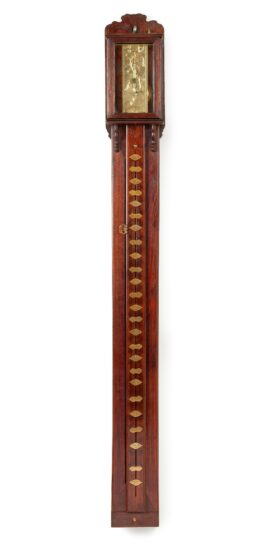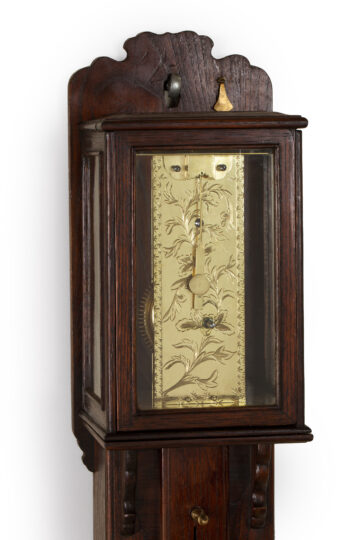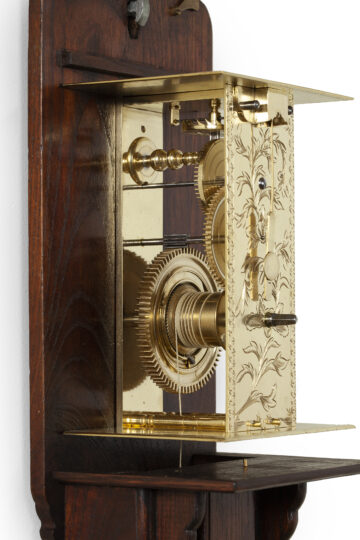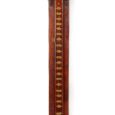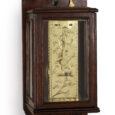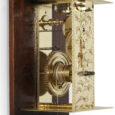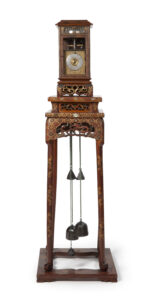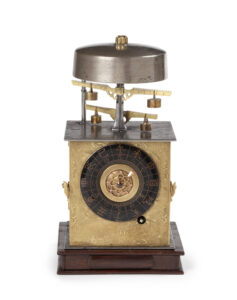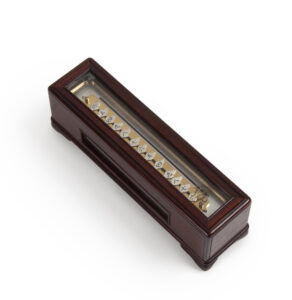LARGE PILLAR CLOCK “SHAKU-DOKEI” Ca. 1860 Japan
M&R127A
PILLAR CLOCK “SHAKU-DOKEI”
Circa 1860
Japan
Movement
Brass plated movement, verge escapement and pendulum, swinging in front of the movement. The brass front plate is pierced with floral designs and has the winding for the going train. The going train is weight-driven.
Dial-plate
The wooden plate has 25 removable brass slides, 13 engraved “toki” for the hours. Each “toki” has a Japanese engraved numeral, stands for the hours 6, 5, 4, 9, 8, 7, 6, 5, 4, 9, 8, 7, 6, the Japanese indication of the hours. There are 12 unengraved half hour ‘toki’. The brass pierced hand moves down and is connected to the weight.
Case
The case is made of shitan wood. Both sides are glazed. Removable front for winding up the movement and set the hands. The key is hidden in an small drawer in the bottom of the case.
Duration: 1 day
Height: 110 cm.
Width: 13 cm.
Depth: 10 cm.
Literature
– W. Brandes, Alte Japanische Uhren.
– N.H.N. Mody, Japanese clocks.
JAPANESE TIMEKEEPING
Japanese timekeeping was very different from timekeeping in the western world. Instead of the hour having a fixed value, the length of an hour in Japan, toki in Japanese, varies according to the length of day and night. Both day and night are divided into 6 toki, spread over the period from sunrise to sunset and from sunset to sunrise. In summer the days are longer than the nights and therefore a toki during the day is longer than one during the night. In winter this is the other way around. For this reason Japanese clocks have chapter rings with movable chapters, so that the length of the toki can be modified. There are also clocks with a fixed chapter ring. In this case the clock’s beat rate changes by moving the weights on the foliot to slow down or accelerate the clock. This is seen mainly in older clocks. The numerals on the clocks run from 9 to 4. The only numeral that is fixed is 9 o’clock, our 12 noon. Japanese clocks indicate how many hours there are left (after 5 comes 4), whereas European clocks indicate how many hours have passed (after 5 comes 6) In Japan the number 9 was holy. Each toki, 12 in total, also had its own zodiac symbol which is depicted on the chapter ring, around the hour numerals.

